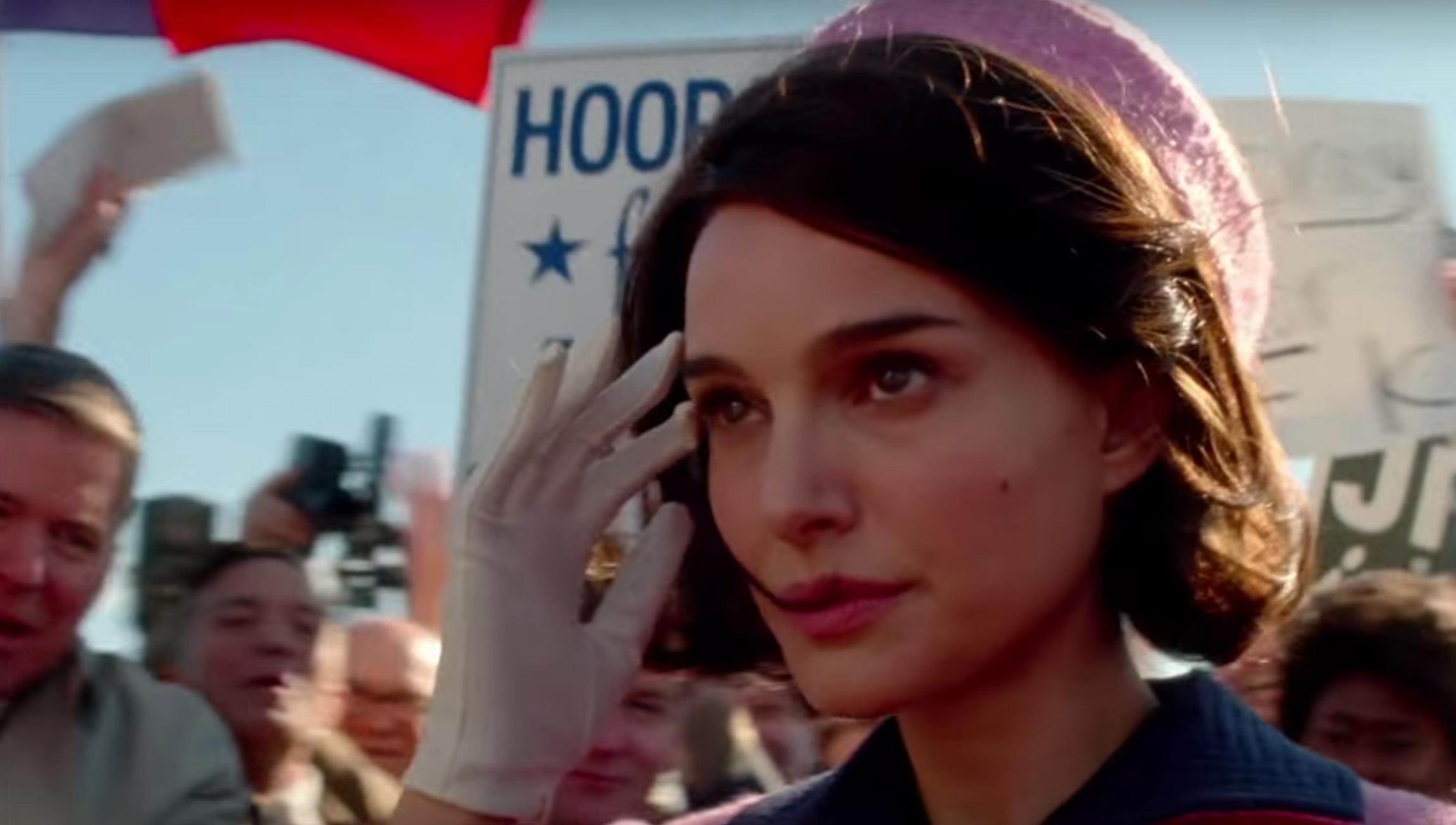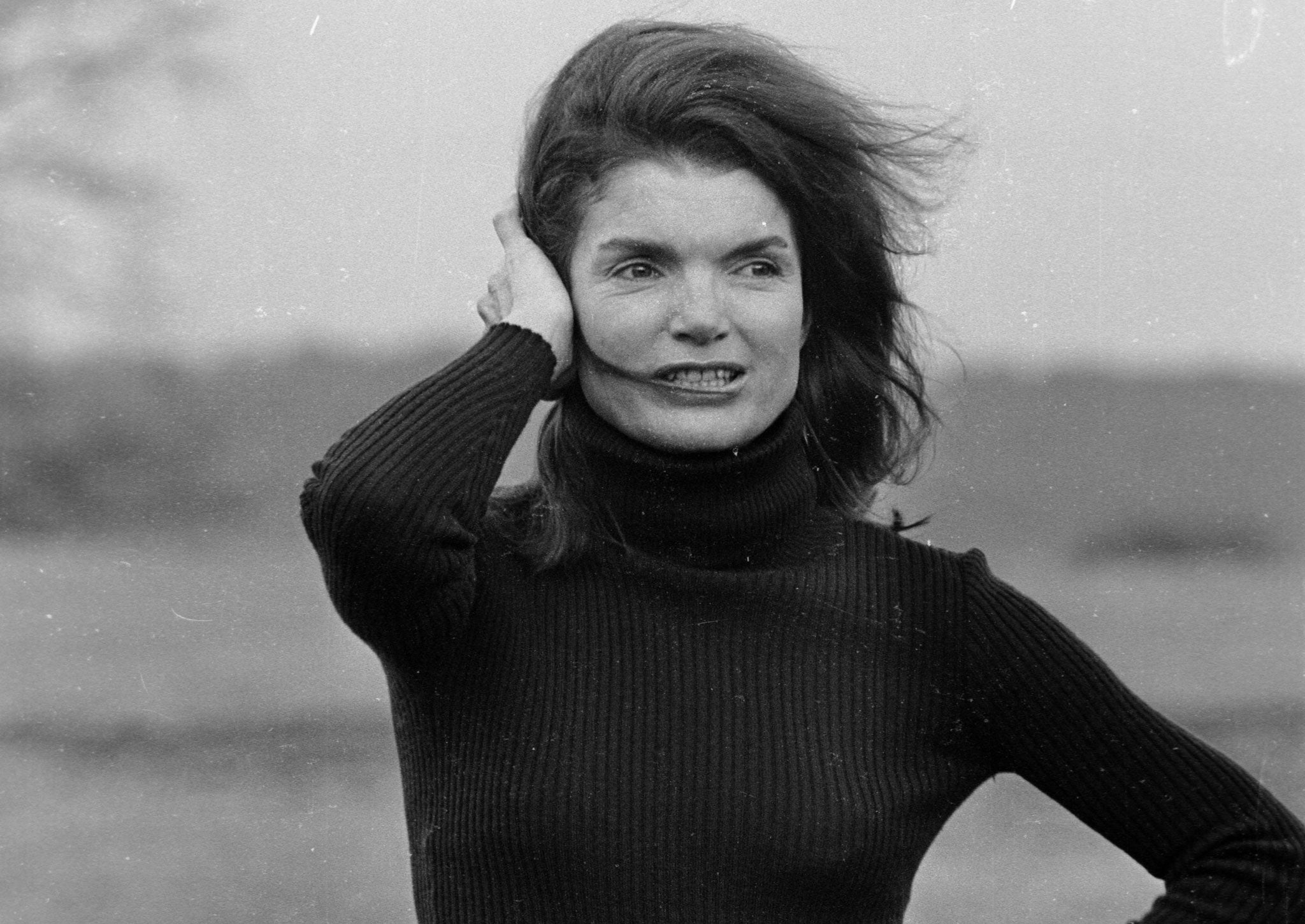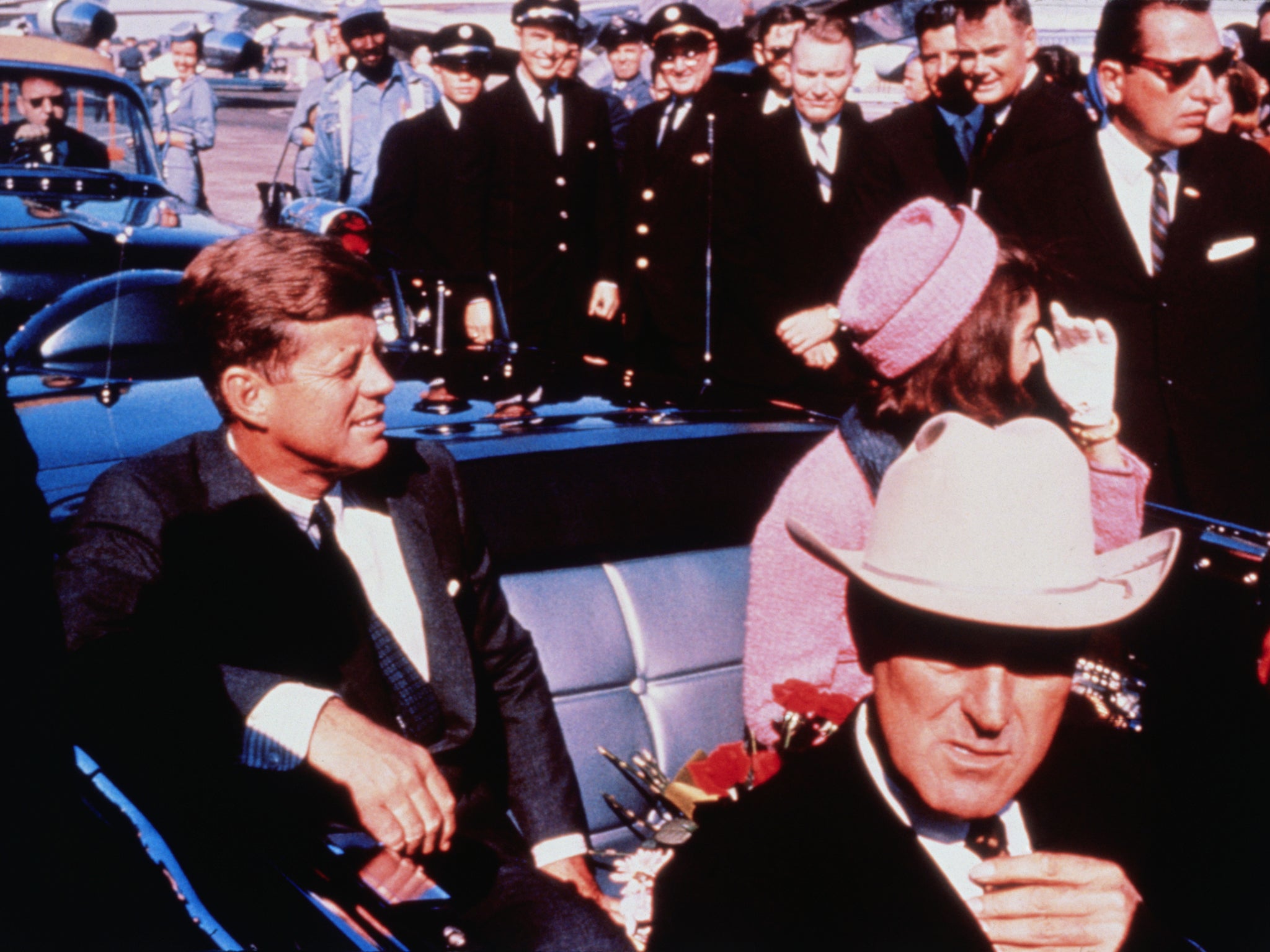Pablo Larraín’s Jackie: She is a big part of the reason why a half century on we are still talking about JFK and why films are still being made about him
'Jackie', starring Natalie Portman as Jackie Kennedy, has a timely release on the day of Trump's inauguration and with 2017 being the centenary of JFK's birth and the release of the rest of the assassination files, it couldn't be more topical

The timing of Pablo Larraín’s Jackie is propitious. Not only was the film released on the same day as the Trump inauguration – an ominous portent for the incoming President - but it is shaping up to be a Kennedy year. 2017 is the centenary of JFK’s birth and October marks the date for the release of the remaining assassination files although the tantalising possibility of a smoking gun appears to be slim to none.
The film focuses on the grief of Jackie Kennedy in the week after the assassination and is organised around the Life magazine interview that she gave to Theodore White in the aftermath. As with almost everything concerning the Kennedys, the White interview was meticulously stage-managed. In her youth, Jackie had described, in a prize winning Vogue essay, how she wanted to be “a sort of overall art director of the 20th century” and this is the key to understanding Larraín’s film.
Jackie Kennedy used the interview, with herself cast in the role of self-conscious narrator, as a PR exercise to launch the idea of the Kennedy administration as the Camelot era. Ultimately what is at stake here is the very idea of history itself. Is history merely the interpretation of those who were present? She asks White, “when something is written down, does that make it history?” White would write in his memoir that she wanted him to “rescue Jack from all these ‘bitter people’…..She did not want Jack left to the historians”. Presidential historian Stephen E. Ambrose described how, “She certainly wanted to take control of history and in so many ways she managed to do so”.

Jackie gave the immortal description of how JFK would listen to the song ‘Camelot’ at night and quoted the lines: “Don’t let it be forgot that for one brief shining moment there was Camelot.” She continued that there would be great presidents again, but there would never be another Camelot.
The Kennedy mythologising had been integral from the start. Paterfamilias Joseph Kennedy Sr – who had made his fortune as a ruthless Wall Street financier and Hollywood mogul – had been priming his sons for the presidency that had eluded him. He planned to “sell Jack like soap flakes” to the American public.
The 1960 campaign was similarly stage-crafted with JFK as the young, vigorous leader against the haggard Richard Nixon virtually cast in the hunchback role of a Richard III type disfigured by ambition. Jackie would go on to transform the role of First Lady through her glamour and beauty and together the presidential couple tapped into the zeitgeist of the Sixties.
From the opening dissonant chords, the film is a funereal requiem of sepulchre colours drained of joy. Hyannis Port – the Kennedy family compound - and the White House appear as cold, sterile, uninhabitable spaces. Jackie tells White that she has never lived in a house of her own and that nothing belongs to her. It becomes gradually apparent that Jackie is estranged from the world around her not just after the assassination but before. On that fateful day, we see her wandering – almost in a state of fugue - through Air Force One before disembarking at Love Field finding herself disorientated by the welcoming crowds.
Larraín’s Jackie can be viewed as a feminist reading of the Kennedys. JFK remains at the margins of the film throughout and it is Jackie who is thrust centre stage. She scrupulously controls the interview, rewriting and editing it before final approval. She stage manages every detail of the pageantry of the funeral. Accompanying the casket in an ambulance, she asks the driver and the nurse if they have heard of William McKinley or James Garfield. No comes the inevitable answer - Have they heard of Abraham Lincoln? - Of course. At that moment, Jackie decides to model the funeral cortege on Lincoln’s procession. Jackie Kennedy is a big part of the reason why a half century on we are still talking about JFK and why films are still being made about him.

Yet even in his absence, the martyred President is very present. The film is at once shot through with lashings of jaundiced cynicism - the barbed exchanges between Theodore White and Jackie accompanied by the chain smoking she carefully concealed from the public. The brutality of realpolitik does not stop even in the midst of grief. Barely managing to compose herself in the fallout from the trauma, Jackie is forced to deal with the LBJ administration breathing down her neck as they demand to move in to the White House.

Watch Apple TV+ free for 7 day
New subscribers only. £8.99/mo. after free trial. Plan auto-renews until cancelled.
ADVERTISEMENT. If you sign up to this service we will earn commission. This revenue helps to fund journalism across The Independent.

Watch Apple TV+ free for 7 day
New subscribers only. £8.99/mo. after free trial. Plan auto-renews until cancelled.
ADVERTISEMENT. If you sign up to this service we will earn commission. This revenue helps to fund journalism across The Independent.
Yet at the same time, it is elegiac in scene after scene - the deathly silence of the ride to Parkland hospital, Jackie covered in brain tissue determined to show the world, “what they’ve done” to him, the morbid autopsy, washing the blood off in a haunting shower sequence, the driving rain in Arlington National Cemetery.
It gradually transpires that Jackie’s grief is far from pure. She confides in a Catholic priest that they rarely spent a night together; even that last night in Fort Worth. She is a woman scorned and yet she is forced to curate the public myth. Larraín shows the couple dancing at a White House ball with Jackie seemingly longing for the real love that JFK was simply incapable of giving her. Now, she is at a loss as to how to remember him in private; telling the priest that she cannot separate out the fond memories from all the rest.
Larraín’s Jackie can never be herself. She is constantly playing a part whether for the audience of the television tour of the White House recreated faithfully here with the splicing of the original. Or the readers of Life magazine or the adoring crowds on the campaign stump. Or the show of grief she puts on for the world despite wishing to barricade herself away.
So what did Camelot actually represent? Beyond the good looks, the infectious charm, the inimitable Boston accent, the soaring rhetoric and radioactive charisma all seemingly made for the television age. Was there any substance behind the facade of the beautiful Kennedys? This question of historical legacy intensely preoccupied JFK. His circle of intimates weighed in accordingly referring to progress on civil rights, the quest to end the Cold War, purported plans for withdrawal from Vietnam and détente with the Soviets offering cooperation on the moon race instead of a nuclear arms race. Here we see the embellishing of the myth elevating the slain prince to classical stature by a coterie of loyal insiders as documented in Arthur Schlesinger’s A Thousand Days and Ted Sorensen’s Kennedy.

Gradually the counter-myth would emerge. In the wake of Watergate, the Church Committee would reveal how, during the Kennedy administration, the CIA had been engaging in covert action plots to assassinate foreign leaders including Fidel Castro.
The celebrated investigative journalist Seymour Hersh devoted a whole book - The Dark Side of Camelot – to dismantling the mythology. Hersh focuses on the incontinent promiscuity and compulsive womanising; most notably with Marilyn Monroe, Judith Campbell Exner (who was simultaneously having an affair with mob boss Sam Giancana) and an encounter with an East German communist spy Ellen Rometsch potentially endangering national security. Hersh also brings in the mob connections rumoured to have helped steal the 1960 election. Hersh concludes that the same reckless risk-taking informed policy – especially the Cuban Missile crisis attributed to being of JFK’s making. Hersh presents JFK as a dilettante, who was often frustrated by Congress in enacting legislative reform.
Similarly, the assassination is shrouded in secrecy. Don DeLillo would reimagine Oswald’s story in his novel Libra and described the assassination as the “seven seconds that broke the back of the American century”. The JFK assassination is often figured as representing the end of American innocence; a watershed moment. Before, there was the world of Norman Rockwell paintings and the American nuclear family. After came Vietnam, more high profile political assassinations and Watergate. The sceptics, such as Christopher Hitchens and Gore Vidal (himself a relative of Jackie) are completely dismissive. Hitchens scathingly describes how America has repeatedly lost her virginity at various intervals ranging from the civil war to Pearl Harbour to 9/11.
The official version of the Warren report with the “lone nut” assassin Lee Harvey Oswald and the magic bullet has been discredited and deconstructed over the decades. Despite a majority of the American public believing in some kind of conspiracy, the label of ‘conspiracy theory’ has been used to dismiss any serious investigation. Remarkably, in 1979, the House Select Committee on Assassinations would conclude that the assassination was due to a probable conspiracy. Most memorably Oliver Stone’s seminal movie JFK details how the assassination likely came out of the massive Operation Mongoose in which the CIA, the mob and anti-Castro Cuban exiles had been working hand in glove.
In the wake of Stone’s JFK, Noam Chomsky felt impelled to respond with a devastating critique on Kennedy policy. Chomsky refers to the detailed internal policy record as proof that JFK had no intention of full withdrawal from Vietnam without success. This remains a serious point of contention with both camps constantly offering up seemingly contradictory evidence. However, Chomsky’s take begs the question as to whether JFK, had he lived, would actually be remembered for escalating Vietnam. LBJ would be memorialised in the refrain of anti-Vietnam protesters – “Hey, hey, LBJ, how many kids did you kill today?” Chomsky goes on to lacerate JFK as a deficit hawk bringing in tax cuts whilst ramping up defence spending.
JG Ballard apparently compared Abraham Zapruder’s famous 8mm film of the assassination to the Sistine chapel. It is a curious description highlighting the perfect choreography of colours - Jackie’s matching pink pill box hat and wool suit, the dark limousine, the green space of Dealey Plaza set against the backdrop of a sunny November day with clear, blue Texas skies. We see the motorcycle escorts and the waving crowds. Then the horror show begins culminating in the explosion of blood and brain – all of this burned into the retina, seared for eternity into the public consciousness.
Ballard’s comparison, though, goes beyond aesthetics. The Zapruder film represents a postmodern labyrinth of subjectivity and relativity. It undermines the very notion of the fidelity of photographic film to truth. Josiah Thompson, author of Six Seconds in Dallas, points out in a New York Times mini-film shot by The Fog of War filmmaker Errol Morris that the assassination would appear to be unique as a crime - the more we know, the further we are from establishing the truth. The possibility of an objective and definitive version of events appears to be unattainable.
In the interview, Jackie ultimately caves in to the voyeurism of the audience describing the Dallas motorcade as “the biggest motorcade from the airport; hot; wild – like Mexico and Vienna”. Of course it doesn’t finish like Vienna or Mexico. The shooters are waiting at the end of the route as if they too have an impeccable sense of their climactic role in the story. Larraín waits until the final flourish to unleash the recreation of the horrific head shot.
'Jackie' is on general release
Youssef El-Gingihy is the author of 'How to Dismantle the NHS in 10 Easy Steps' published by Zero Books
Join our commenting forum
Join thought-provoking conversations, follow other Independent readers and see their replies
Comments